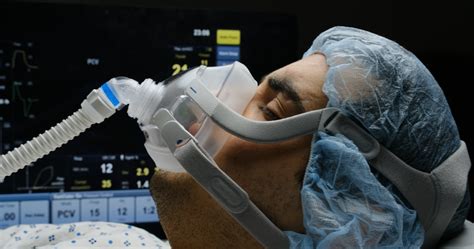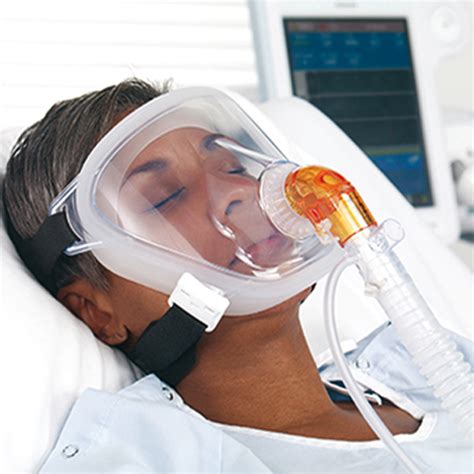lv filling tamponade postive pressure ventilation | ni ppv positive pressure ventilation lv filling tamponade postive pressure ventilation Elevated filling pressures from left-ventricular (LV) dysfunction lead to alveolar pulmonary edema, which impairs both oxygenation and ventilation.
Last updated on May 27, 2023 at 17:30 by A Pile of Cats 9 comments. On this page, you will learn how to optimise your opener and rotation in both single-target and multi-target situations. We also cover the use of your cooldowns, to ensure you can achieve the best use of them every time as a Dark Knight Tank in Final Fantasy XIV: Endwalker .
0 · positive pressure ventilation procedures
1 · positive pressure ventilation in therapy
2 · positive pressure ventilation guidelines
3 · positive pressure ventilation during ppv
4 · positive pressure ventilation diagram
5 · positive pressure release ventilation
6 · positive airway pressure ventilation
7 · ni ppv positive pressure ventilation
Unlocking all Cells and Lv. Up the unit to the limit to increase the Unit's Rank. Swipe the screen left or right to view different Units. By pressing the [Usable Falna] button, you can check your current Falna stocks. Once the Unit's Rank and Lv. Up has reached it's max, you can "Limit Break" the Unit. To do this, tap [Limit Break] → [Use Bond].

During spontaneous breathing, negative inspiratory pleural pressure enhances right ventricular (RV) filling, minimizes RV afterload by maintaining low pulmonary vascular .Positive end-expiratory pressure (PEEP) will have variable effects on cardiac output (CO) depending on left ventricular (LV) and right ventricular (RV) .Elevated filling pressures from left-ventricular (LV) dysfunction lead to alveolar pulmonary edema, which impairs both oxygenation and ventilation. The .
Positive pressure ventilation (PPV) remains the mainstay of treatment for these patients. Alterations in intrathoracic pressure during PPV has distinct effects on both the right and left ventricles, affecting cardiovascular . The principal clinical manifestations of cardiac tamponade are reduced stroke volume, elevated filling pressures, and attendant . Elevated filling pressures from left-ventricular (LV) dysfunction lead to alveolar pulmonary edema, which impairs both oxygenation and ventilation.
These effects include decreasing LV afterload by lowering transthoracic and transpulmonary pressure (60); improving congestion and unloading the LV by decreasing .The discontinuation of mechanical ventilation may reverse the beneficial effects of positive pressure ventilation in the failing heart. The identification and risk stratification of patients likely .
Key points. •. Right ventricular afterload increases when positive intrathoracic pressure is added, caused by increased pulmonary vascular resistance. •. Both left and right ventricular pressures are increased relative to atmospheric . Key points. •. The rate of fluid accumulation relative to pericardial stretch and the presence or absence of compensatory mechanisms are crucial in the development of cardiac . During spontaneous breathing, negative inspiratory pleural pressure enhances right ventricular (RV) filling, minimizes RV afterload by maintaining low pulmonary vascular resistance (PVR), and maintains relatively higher left ventricular (LV) afterload.
positive pressure ventilation procedures
Positive end-expiratory pressure (PEEP) will have variable effects on cardiac output (CO) depending on left ventricular (LV) and right ventricular (RV) function, preload and filling pressures. Note that in patients with noncompliant lungs from causes other than cardiogenic pulmonary edema, the effect of PEEP on P pleural and pre-load might not .Elevated filling pressures from left-ventricular (LV) dysfunction lead to alveolar pulmonary edema, which impairs both oxygenation and ventilation. The implementation of positive pressure ventilation (PPV) improves gas exchange and can improve cardiovascular hemodynamics by reducing preload and afterload of the LV, reducing mitral regurgitation . Positive pressure ventilation (PPV) remains the mainstay of treatment for these patients. Alterations in intrathoracic pressure during PPV has distinct effects on both the right and left ventricles, affecting cardiovascular performance. The principal clinical manifestations of cardiac tamponade are reduced stroke volume, elevated filling pressures, and attendant compensatory changes associated with increased sympathetic tone (eg, tachycardia and increased systemic vascular resistance).
Elevated filling pressures from left-ventricular (LV) dysfunction lead to alveolar pulmonary edema, which impairs both oxygenation and ventilation. These effects include decreasing LV afterload by lowering transthoracic and transpulmonary pressure (60); improving congestion and unloading the LV by decreasing preload (61); optimizing LV and RV myocardial perfusion and relieving ischemia by providing better oxygenation, reversing hypoxic pulmonary vasoconstriction, and decreasing work-of .
The discontinuation of mechanical ventilation may reverse the beneficial effects of positive pressure ventilation in the failing heart. The identification and risk stratification of patients likely to fail wean-ing is crucial to ensure that interventions can be put in place preemptively. INTRODUCTION.
Key points. •. Right ventricular afterload increases when positive intrathoracic pressure is added, caused by increased pulmonary vascular resistance. •. Both left and right ventricular pressures are increased relative to atmospheric pressure during positive pressure ventilation (PPV). Key points. •. The rate of fluid accumulation relative to pericardial stretch and the presence or absence of compensatory mechanisms are crucial in the development of cardiac tamponade. •. The pathophysiology of tamponade entails exaggerated variations in the normal haemodynamic changes that occur during respiration. •. During spontaneous breathing, negative inspiratory pleural pressure enhances right ventricular (RV) filling, minimizes RV afterload by maintaining low pulmonary vascular resistance (PVR), and maintains relatively higher left ventricular (LV) afterload.
Positive end-expiratory pressure (PEEP) will have variable effects on cardiac output (CO) depending on left ventricular (LV) and right ventricular (RV) function, preload and filling pressures. Note that in patients with noncompliant lungs from causes other than cardiogenic pulmonary edema, the effect of PEEP on P pleural and pre-load might not .Elevated filling pressures from left-ventricular (LV) dysfunction lead to alveolar pulmonary edema, which impairs both oxygenation and ventilation. The implementation of positive pressure ventilation (PPV) improves gas exchange and can improve cardiovascular hemodynamics by reducing preload and afterload of the LV, reducing mitral regurgitation .
Positive pressure ventilation (PPV) remains the mainstay of treatment for these patients. Alterations in intrathoracic pressure during PPV has distinct effects on both the right and left ventricles, affecting cardiovascular performance. The principal clinical manifestations of cardiac tamponade are reduced stroke volume, elevated filling pressures, and attendant compensatory changes associated with increased sympathetic tone (eg, tachycardia and increased systemic vascular resistance).
positive pressure ventilation in therapy
Elevated filling pressures from left-ventricular (LV) dysfunction lead to alveolar pulmonary edema, which impairs both oxygenation and ventilation. These effects include decreasing LV afterload by lowering transthoracic and transpulmonary pressure (60); improving congestion and unloading the LV by decreasing preload (61); optimizing LV and RV myocardial perfusion and relieving ischemia by providing better oxygenation, reversing hypoxic pulmonary vasoconstriction, and decreasing work-of .The discontinuation of mechanical ventilation may reverse the beneficial effects of positive pressure ventilation in the failing heart. The identification and risk stratification of patients likely to fail wean-ing is crucial to ensure that interventions can be put in place preemptively. INTRODUCTION.Key points. •. Right ventricular afterload increases when positive intrathoracic pressure is added, caused by increased pulmonary vascular resistance. •. Both left and right ventricular pressures are increased relative to atmospheric pressure during positive pressure ventilation (PPV).

ysl black bow
berneys ysl star black and white
latviešu valoda. Mājaslapa. www .satori .lv. Satori.lv ir biedrības "Ascendum" izdots interneta žurnāls, kas publicē rakstus un esejas par aktuālām sociālpolitiskām un kultūrpolitiskām problēmām, recenzijas un pārdomas par grāmatām, filmām, teātra izrādēm, koncertiem, mākslas izstādēm, intervijas ar literātiem .
lv filling tamponade postive pressure ventilation|ni ppv positive pressure ventilation




























